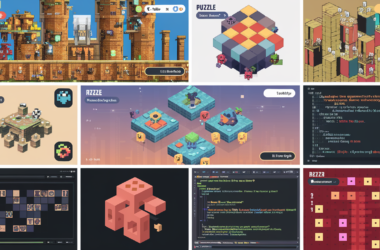Cloud gaming, often called game streaming, is a rapidly evolving technology that allows users to play video games without needing high-end hardware. Instead of relying on local devices, games are run on powerful remote servers and streamed directly to the user’s screen via the internet. This method mirrors how we stream movies or music but with the added complexity of real-time interaction. This approach eliminates the need for frequent hardware upgrades and opens access to a broader gaming audience.
A significant advantage of cloud gaming lies in its convenience and accessibility—two of the most notable benefits of using cloud gaming services. Gamers can broadcast their preferred games on multiple devices, including smartphones, tablets, and low-end PCs while maintaining performance and graphical quality. This versatility enables a larger audience to experience gaming without costly equipment, which is particularly attractive to casual gamers and those new to the gaming world.
As the technology matures, cloud gaming is set to transform the gaming industry. With faster internet speeds and more reliable infrastructure, it promises a future where gaming is more inclusive, seamless, and scalable.
Benefits for Gamers
For gamers, the shift to cloud technology brings benefits designed to enhance accessibility and gameplay experiences. Escaping the perpetual cycle of hardware upgrades, users no longer need to invest in the latest consoles or graphic cards. Instead, they can enjoy various titles through streaming services, bypassing lengthy downloads and installations. The ability to enjoy games across multiple devices without loss of saved progress or quality highlights the seamless nature of cloud gaming, effectively blurring the lines of device exclusivity that have long characterized the gaming world.
Advantages for Developers
Cloud gaming isn’t solely beneficial to players; developers equally stand on the brink of an exciting era filled with new potential. With cloud gaming, the reach of developers extends globally, untethered by the geographical constraints accompanying physical distribution. Cost reductions are apparent in the diminished need for physical production and shipping, while cloud technology offers enhanced security measures that curtail piracy—a common bane in traditional gaming. Furthermore, the ability to deliver updates and patches seamlessly means games can continue to evolve post-launch, offering players new content and improvements and ensuring ongoing engagement with their audience.
Technical Challenges and Solutions
Despite numerous advantages, cloud gaming is not without its challenges. Latency, the delay between user input and game response, remains a significant obstacle, often diminishing the quality of interactive experiences. Additionally, a robust internet infrastructure is essential for effective game streaming. In response, innovative solutions are gaining ground. Edge computing, one such solution, processes data nearer to its source, effectively reducing latency. The introduction and expansion of 5G networks represent another promising advancement, offering ultra-fast and reliable internet connectivity that enhances the potential for smoother and more responsive gaming experiences. These emerging technologies pave the way for overcoming existing barriers, bringing cloud gaming closer to realizing its full potential.
Upcoming Trends in Cloud Gaming
As cloud gaming advances, several intriguing trends will likely transform the industry. The integration of social gaming platforms is expected to improve community interaction and engagement, enabling players to enjoy and compete in games with friends and rivals around the globe in real time. Additionally, the growth of subscription-based gaming models makes a broad selection of game titles more accessible, allowing users to explore various games without needing multiple purchases. These developments suggest a move towards gaming experiences that are more inclusive and centered around community, potentially establishing new benchmarks for consumer expectations within the industry.
The Role of AI and Machine Learning
The role of artificial intelligence and machine learning in cloud gaming is highly significant. These technologies are driving significant advancements in gameplay and user experience personalization. By utilizing AI, developers can create more dynamic and adaptive gaming environments that respond intelligently to player actions, enhancing engagement. Machine learning algorithms also help to optimize network traffic and content delivery, ensuring efficient streaming and reducing latency. As cloud gaming infrastructure matures, AI and machine learning will undoubtedly be key players in delivering rich and compelling gaming experiences tailored to individual preferences.
The Impact on Traditional Gaming Markets
The rise of cloud gaming presents a formidable challenge to established console and PC markets. As streaming services proliferate, they threaten to disrupt traditional business models and sales channels. With consumers increasingly drawn to the flexibility and convenience of cloud-based gaming, companies operating in the conventional market are compelled to re-evaluate their strategies. This shift encourages innovation and adaptation, driving the development of services and products that align with emerging consumer demands for flexible, on-demand access to a broad gaming library. Cloud gaming’s scalability and adaptability make it a compelling alternative poised to influence the gaming landscape significantly in the future.
Conclusion: Envisioning the Future
As we glance toward the future, it is clear that cloud gaming will significantly impact the trajectory of the gaming industry. By embracing cutting-edge technological advancements, such as AI, edge computing, and 5G, the sector is set to enter an era marked by unprecedented innovation and growth. This evolution promises to deliver increasingly immersive, accessible, and dynamic gaming experiences for consumers while providing developers with a fertile landscape for creative and technical exploration. As the journey into the cloud unfolds, it offers a glimpse into a future where gaming is more inclusive, engaging, and transformative than ever before.







